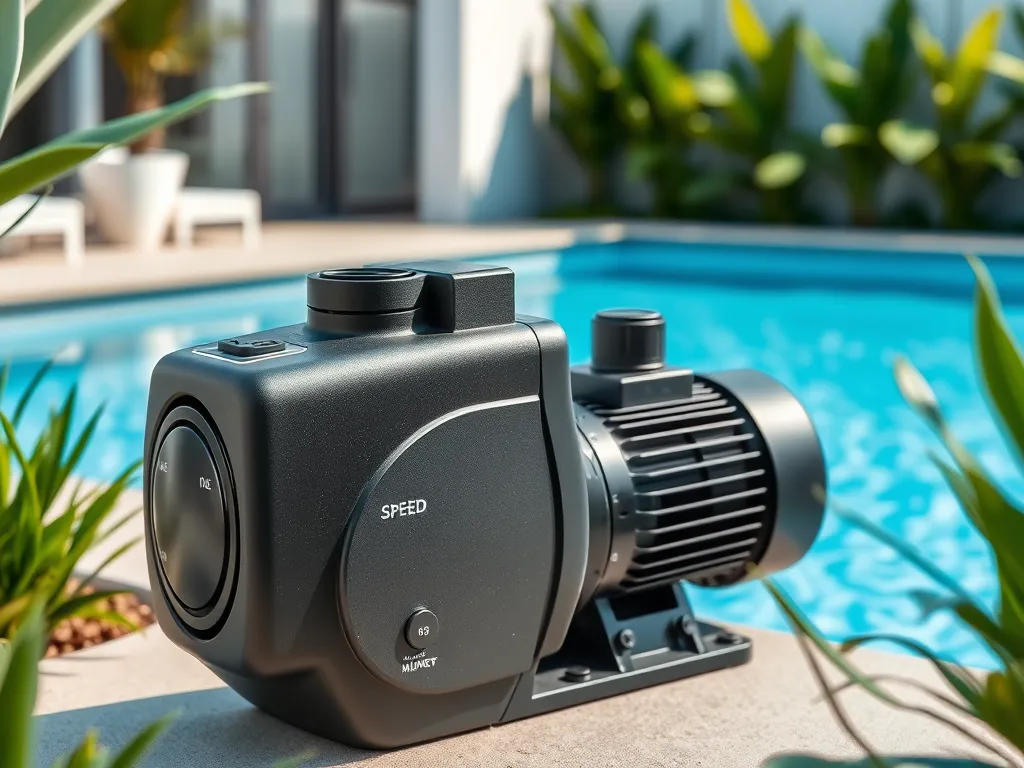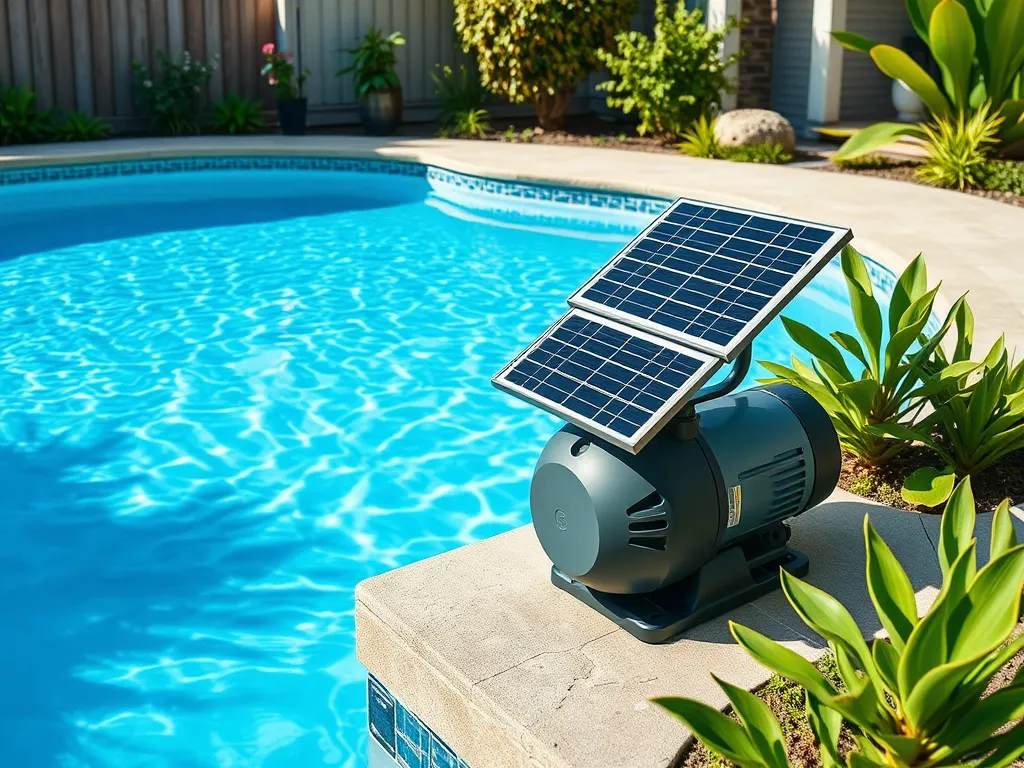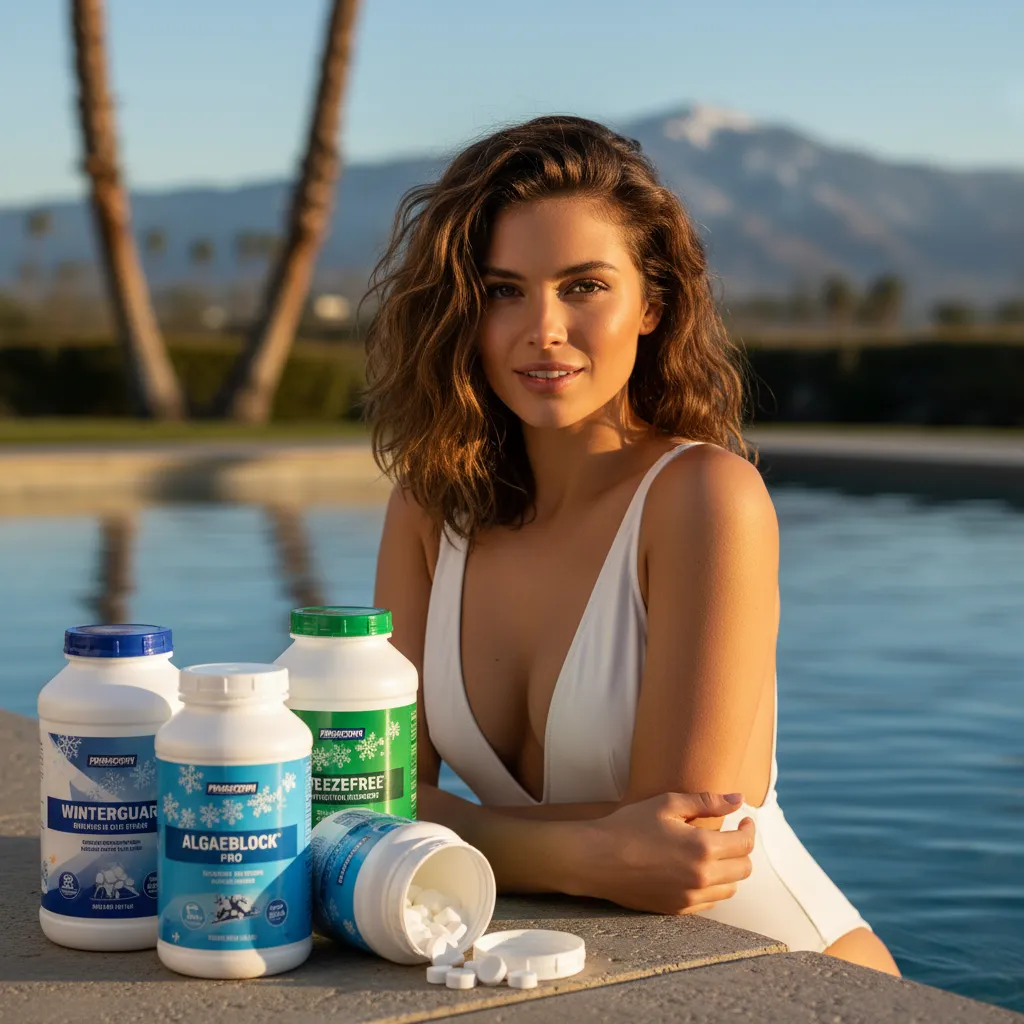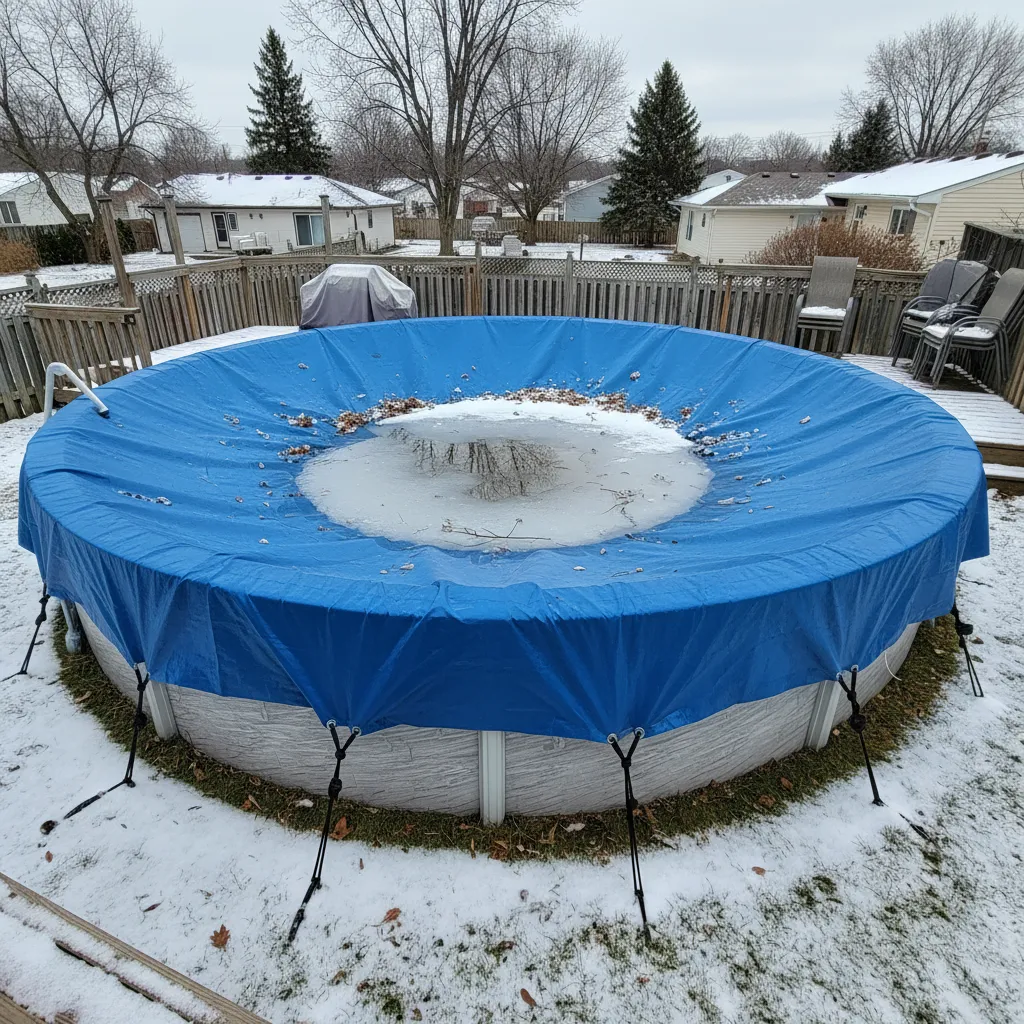Pool Pump Kwh Calculator: Estimate Your Energy Usage
Published on: April 7, 2025 | Last Updated: April 13, 2025
Written By: Rachael Weatherbottom
Want to know how much electricity your pool pump uses? This calculator helps you find out. Just enter your pump’s details and local energy costs. You’ll see daily, monthly, and yearly kWh usage and costs. Perfect for budget planning or going green!
Pool Pump Energy Calculator
- Find your pump’s wattage on its nameplate
- Enter daily run hours (typically 6-12)
- Check your electric bill for $/kWh rate
Pool Pump Energy Consumption: Key Factors Influencing Kwh Usage
Pool pumps account for 20-30% of a household’s summer energy bills. Their electricity demands vary based on design, operational parameters, and environmental conditions. Identifying these variables helps optimize energy efficiency. Managing pool pump usage can lead to significant savings on electricity costs. By using energy-efficient pumps and scheduling their operation wisely, homeowners can reduce their overall energy consumption.
Crucial Winterizing Products
"The all-in-one solution for a guaranteed clear spring opening."
All-in-One Closing Chemical Kit
Winter demand is high - check stock
"The 'set & forget' option. This is the easiest winterizing I've ever done."
Simple 3-in-1 Winterizing Balls
Winter demand is high - check stock
"Invest once to protect your liner and prevent a swamp in the spring."
Heavy-Duty Winter Pool Cover
Winter demand is high - check stock
Pump Horsepower (HP) and Motor Efficiency
Higher horsepower pumps consume more energy. A 1.5 HP motor draws approximately 1.1 kW per hour, while a 3 HP unit uses 2.25 kW. Energy-efficient models with permanent magnet motors or variable-speed technology reduce wattage by 30-80%. Look for Energy Star-certified pumps with a Wire-to-Water Efficiency (WWE) rating above 50%. To select the right pump for your pool, using a pool pump hp calculator can be very helpful. This tool estimates the horsepower needed based on the pool size and other factors.
Daily Runtime and Flow Rate Requirements
The average pool requires 8-12 hours of daily circulation. Pumps moving 40-60 gallons per minute (GPM) to achieve one full turnover cycle (pool volume ÷ flow rate) influence total kWh. For a 20,000-gallon pool, a 50 GPM pump needs 6.6 hours to cycle all water. Extending runtime increases energy use exponentially.
Total Dynamic Head (TDH) and System Resistance
TDH measures hydraulic resistance from plumbing length, filter pressure, and elevation changes. A TDH of 50 feet forces a pump to work harder, increasing wattage. Clean filters (15-20 PSI) reduce TDH by 10-15% compared to clogged ones (30+ PSI).
| Pump Type | HP | Avg. kWh/Hour | Annual Cost* |
|---|---|---|---|
| Single-Speed | 1.5 | 1.4 | $612 |
| Dual-Speed | 1.5 | 0.7 (low speed) | $306 |
| Variable-Speed | 1.5 | 0.3-0.9 | $158 |
*Based on 8-hour daily runtime and $0.15/kWh.
Pool Pump Types: Kwh Consumption Compared
Not all pumps drain energy equally. Technological advancements have introduced designs that slash operating costs.
Single-speed Pumps
Older single-speed models run at 3,450 RPM, consuming 1.4-2.5 kW hourly. They lack flexibility, often exceeding necessary flow rates. Replacing a single-speed pump with a variable-speed model can save $500+ annually. This change can lead to better efficiency and reduced energy costs. Variable speed pumps adjust their speed based on the system’s demand, providing just the right amount of flow when needed.
Variable-speed Pumps
These pumps adjust RPMs between 600-3,450, cutting energy use by 70-90%. Running at 1,200 RPM for 24 hours uses the same kWh as a single-speed pump operating 6 hours. Most qualify for local utility rebates up to $200. The speed of a vacuum pump can greatly affect its efficiency and performance. Higher speeds typically allow for faster evacuation times, which can be crucial in various applications.
Dual-speed and Energy-efficient Models
Dual-speed pumps offer high (3,450 RPM) and low (1,725 RPM) settings. Low speed consumes 75% less energy. Newer permanent magnet motors (ECM) improve WWE by 15-30% over traditional induction motors. Knowing how these speeds relate to pool pump amps is important for choosing the right pump. The amp draw can vary significantly between settings, affecting energy costs and efficiency.
Also See: Pump Run Time Calculator: Optimize Your Pump’s Time

Calculating Pool Pump Energy Costs: Variables to Consider
Local Electricity Rates
Residential rates range from $0.10/kWh (Idaho) to $0.33/kWh (California). Multiply your pump’s kW rating by daily hours and local rates. Example: A 1.5 HP pump (1.1 kW) running 10 hours/day in Florida ($0.12/kWh) costs $1.32 daily or $40/month. Keeping track of these costs is important for pool owners. A pool pump electricity cost calculator can help you better manage your expenses.
Seasonal Usage Patterns
Summer demands increase runtime by 20-40% for algae prevention. Winterizing reduces usage but requires periodic circulation. Heat pumps or saltwater systems may extend operational months. As the seasons change, it’s important to think about how to protect your pool without draining it. There are effective methods to winterize your pool while keeping the water in, ensuring it stays clean and ready for the next summer.
Tax Credits and Rebates
- Federal tax credits: 30% up to $2,000 for ENERGY STAR variable-speed pumps
- State programs: Florida offers $150 rebates; California provides up to $400
- Utility incentives: Duke Energy rebates cover 50% of pump upgrade costs
Seasonal Adjustments for Optimal Energy Efficiency
Summer Optimization
Increase circulation during peak temperatures (12+ hours) but lower RPMs. Clean filters biweekly to maintain flow rates. Use timers to avoid midday operation when electricity rates peak. Continuous operation of the pool filter helps keep the water clean and clear. Running the filter 24/7 ensures that debris and contaminants are consistently removed, promoting a healthier swimming environment.
Winter Strategies
Reduce runtime to 4-6 hours and RPMs below 1,200. Cover the pool to minimize debris. Insulate above-ground plumbing to prevent heat loss.
FAQs: Pool Pump Kwh and Cost Management
How Many Kwh Does a Pool Pump Use Monthly?
A 1.5 HP single-speed pump averages 300-450 kWh monthly. Variable-speed models cut this to 90-150 kWh.
Does Pump Size Affect Energy Use More Than Runtime?
Both matter. A 3 HP pump running 4 hours uses 9 kWh (3 HP x 0.7457 kW/HP x 4h). A 1 HP pump running 12 hours consumes 8.95 kWh. Match pump size to pool volume.
Are Solar-powered Pool Pumps Cost-effective?
Solar pumps cost $2,500-$4,500 but eliminate grid dependence. They require 500-1,000 watts of panels, producing 3-5 kWh daily. Payback periods range from 4-7 years.

Specialized Calculators for Pool Pump Energy Analysis
Variable-speed Pump Savings Calculator
Compares existing pump kWh against potential savings from variable-speed upgrades. Factors in utility rates and rebates.
Solar Pool Pump ROI Calculator
Estimates panel requirements, battery storage, and payback timelines based on location and pool size.
Hydraulic System Resistance Calculator
Measures TDH using pipe diameter, length, and filter pressure to recommend ideal pump specifications.
Reducing Pool Pump Energy Consumption: Actionable Tips
- Install a variable-speed pump: Saves 80% on energy costs
- Shorten daily runtime by 1-2 hours monthly until water clarity drops
- Replace sand or cartridge filters every 3-5 years to maintain flow rates
- Use a pool cover: Reduces circulation needs by 30%
Integrating Smart Technology for Energy Management
Wi-Fi-enabled pumps like the Pentair IntelliFlo or Hayward Omni adjust speeds based on real-time conditions. Features include:
- Automatic RPM adjustments during off-peak hours
- Leak detection alerts to prevent overworking the pump
- Integration with solar controllers for hybrid energy use
For precise kWh projections tailored to your equipment and location, explore the advanced tools at My Pool Calculator.
Additional Resources for You:
- National Swimming Pool Foundation (NSPF) – Certification & Resources
- Pool Pump Electricity Usage Calculator – GridHacker
- Pool pumps | Energy Rating Calculator
- Pool Pump Savings Calculator | Pool Maintenance Cost Calculator | Pentair
- How To Calculate the Cost of Running A Pool Pump – INYOPools.com
A pool care geek who’s been testing water chemistry since she was tall enough to reach the skimmer.
Pool Calculators, Pool Volume





